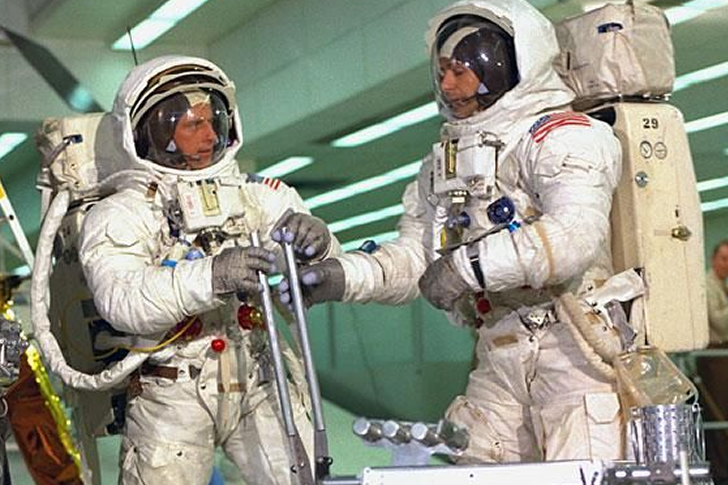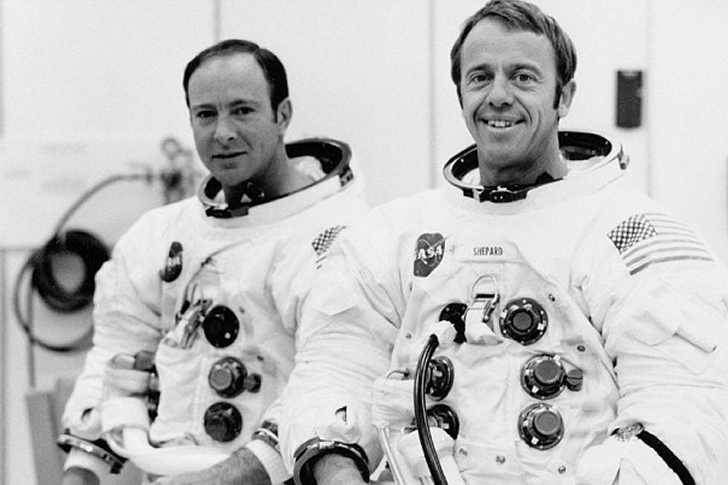The Twelve Men Who Walked the Moon
We will always remember Neil Armstrong as the first even person to walk on the moon. Armstrong is also given credit for the enigmatic line, “One small step for man, one giant leap for mankind”, that made everyone jump in joy back in 1969. Did you know, though, that eleven other men followed Armstrong? The second man to walk on the surface of the moon was Apollo 11 co-astronaut Buzz Aldrin. This duo, along with their command module pilot, Michael Collins, achieved President John F. Kennedy’s plan of landing a crewed ship on the moon. Inspired by the fulfillment of their ultimate goal, the US sent five more Apollo missions with varying objectives to the moon.
Apollo 12 – Pete Conrad and Alan Bean

In command of the spacecraft was Pete Conrad, who was aided by pilots Alan Bean and Richard Gordon. As with any other mission, the command module pilot would not walk the moon but stayed in the module to photograph and communicate with Houston. Conrad and Bean walked the moon and deployed the Apollo Lunar Surface Experiments Package, or ALSEP, which was to be left on the moon’s surface to gather seismic, scientific, and engineering data. Part of the mission was also to develop precision landing capabilities and to evaluate how humans could work long-term on the lunar surface. To a great degree, the astronauts were able to achieve their objectives.
Apollo 14 – Alan Shephard and Edgar Mitchell

In case you are wondering why there is no Apollo 13, it is because the third attempt failed when an oxygen gas tank exploded in the service module, prompting the return of the mission in 1970. Learning from this mishap, NASA engineers double-checked every nook and cranny on Apollo 14 and made the necessary modifications. Alan Shepard and Edgar Mitchell landed on Fra Mauro on February 5, 1970. After several attempts to achieve a “hard dock,” the mission proved successful after the astronauts collected 94 pounds of rock and soil for analysis back on Earth.
Apollo 15 – David Scott and James Irwin

Having achieved more data from the Apollo 14 mission, Apollo 15 aimed for a more ambitious goal–that of staying longer, explore the Hadley-Apennine region, and activate lunar surface scientific experiments. This was on top of the usual soil, rock, and photograph collection. With limited electricity onboard, this certainly proved challenging for the three astronauts. With the help of the Lunar Roving Vehicle, or LRV, however, the geographical exploration became easier and manageable for Scott and Irwin who walked the moon on this mission. The landing was also only slightly off schedule and reached the moon by July 30, 1971.
Apollo 16 – John Young and Charles Duke

Apollo 16’s mission did not differ significantly from the previous flights as it was tasked to carry out lunar exploration and experiment, as well as taking photographs. It’s landing site, however, was unique because the area selected for this mission was a volcanic area, which made the exploration difficult for the two moonwalkers, John Young and Charles Duke. The astronauts also took photographs of the Earth using an ultraviolet stellar camera, returning images of our planet and nearby celestial bodies that could not be seen from Earth. We can say that NASA made significant investments on this flight, more than the previous missions.
Apollo 17 – Eugene Cernan and Harrison Schmitt

With data from Apollo 16, this mission wanted to focus on exploring more rocks in the Taurus-Littrow highlands and valley area where older and newer rocks than the previous missions might be found. It is also this mission that debunked prior belief that the moon had no gas, hence no atmosphere. The Lunar Atmospheric Composition Experiment (LACE) on the moon’s surface detected trace amounts of atoms of argon, helium, ammonia, methane, neon, and carbon dioxide.
Indeed, the series of moon landings added to what we know about the moon. While we salute those who walked the surface of Earth’s satellite, let us also not forget the command module pilots. While they were not able to walk the moon, they were instrumental in keeping the flight to and from the moon in order.
